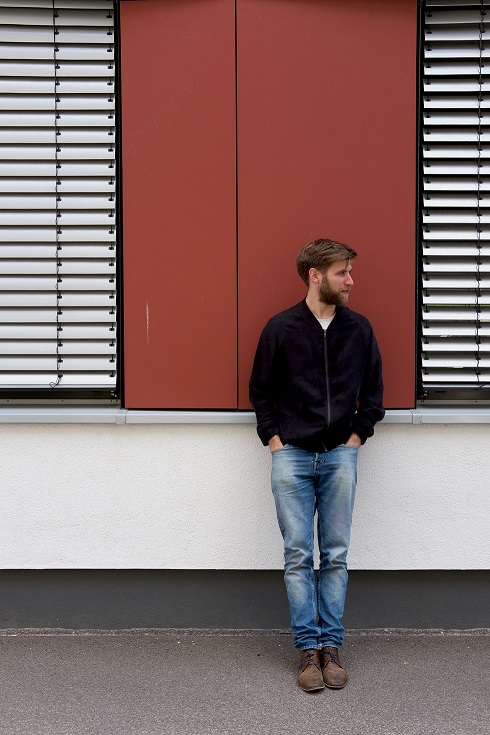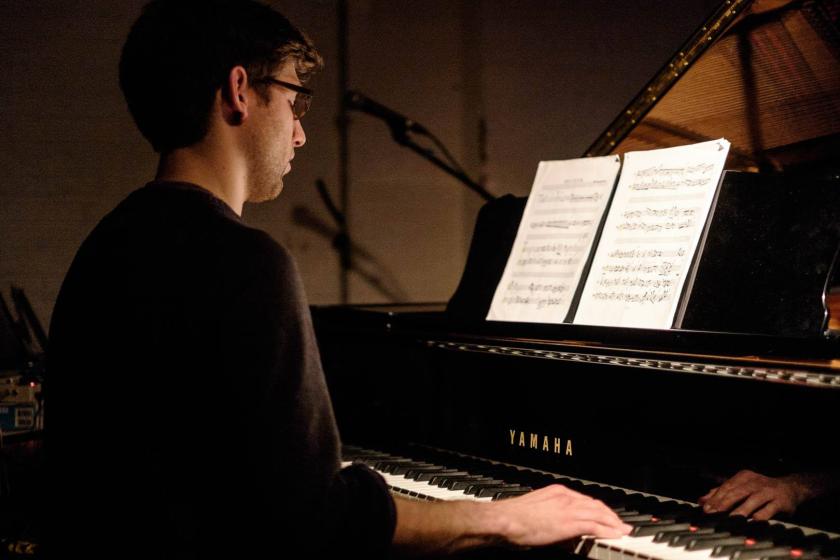Joseph Houston’s recital gave us the piano exposed, sent up, psychoanalysed; in short, piano as theatre. And whether silently depressing keys or creating chords with an elbow, the young Berlin-based pianist brought formidable focus and unshowy mastery.
He also revealed a rare talent for curation, creating a narrative that began with a walk around the piano and ended with Christian Mason’s numinous Remembered Resonance, grappling in between with that "curved, tensed, gridded institution of an instrument", in the words of composer Louis d’Heudieres.
Houston gave tremendous direction and clarity to the most rhythmically complex episodes
There were three UK premieres, all involving text, voice, electronics and recorded sound, cheerfully blitzing up philosophy with banter. In Barnett-Mackintosh’s The thing is, I think the piano is an adversary whose historical baggage intimidates. To repetitive machine-noise and multiple voices, Houston walked around it, squared up to it, rubbed its gleaming surface till it squeaked, rattled its innards with a ruler before daring to touch it into frail song. Loaded phrases floated by, "only you can get yourself out of this": the act of composing itself under the microscope. In his comic Empathy Reducer d’Heudieres replaced the Steinway with a MIDI keyboard, upon which Houston’s fingers raced producing cascading unpitched thuds. After a conversational interlude between Houston and voices off ("kind of, like, plinky plonk sounds"), the work takes off into a frenzied toccata, whose textures, however intriguing, serve banal sequences. Stephen Crowe’s Ey up, me duck, an endearing caper requiring superhuman synchronicity, mixes ducks, pre-recorded piano and documentary audio with a hotly acrobatic score.
If these works were about the process, at the evening's heart were two masterpieces by sculptors in sound, Xenakis’s Mists (1980) and Rebecca Saunders’ Shadows (2014). Houston made an impressive distinction between Xenakis’ starburst clusters and detailed, filigree passagework, the hammer-blow scales rising to blinding éclats from which the piece is constructed. Messiaen and Nancarrow lurk in its high, bright braids of luminescence. Houston gave tremendous direction and clarity to the most rhythmically complex episodes.
 Saunders’s remarkable Shadows feels like a natural progression, only here the forensic focus is on resonance, how sound can be shaped and coloured after it has left the piano. The seemingly miraculous feat of altering the glassy, organ-like resonance, diffusing the chord shadows into new clouds of overtones, sliced through with silence, requires the deepest listening and absolute control. Houston achieved it with profound precision, his hands, elbows, arms and fingers flowing in a mesmerising choreography. Once experienced, you’ll never hear the crude termination of a piano note in the same way. (Joseph Houston, pictured right, by Lian Rotem-Stibbe)
Saunders’s remarkable Shadows feels like a natural progression, only here the forensic focus is on resonance, how sound can be shaped and coloured after it has left the piano. The seemingly miraculous feat of altering the glassy, organ-like resonance, diffusing the chord shadows into new clouds of overtones, sliced through with silence, requires the deepest listening and absolute control. Houston achieved it with profound precision, his hands, elbows, arms and fingers flowing in a mesmerising choreography. Once experienced, you’ll never hear the crude termination of a piano note in the same way. (Joseph Houston, pictured right, by Lian Rotem-Stibbe)
Christian Mason’s piece, Resonance Remembered, deals with resonance inside and around the piano, radiantly but perhaps less originally than Saunders. Her one-time student Mark Barden, though, produced an audacious provocation in Die Haut Anderer (2008), inspired by a study of obsessive repetition, which Houston set alight. It opened with a silent snatching of notes from all over the keyboard, until "mistakes" sounded, giving way to lunging virtuosity which Houston realised with vivid, rhythmic rapture. The tinnitus-inducing acoustic effect produced by repeating a note for an extended duration split the pitch and percussive gesture itself, rattling the very bones of the piano. Houston’s encore, his own Opus 10, was a wraith-like moto perpetuo for which his fingers barely touched the keyboard, the pianistic equivalent of walking on water, apt for an artist whose mind soars so powerfully over physical matter.















Add comment